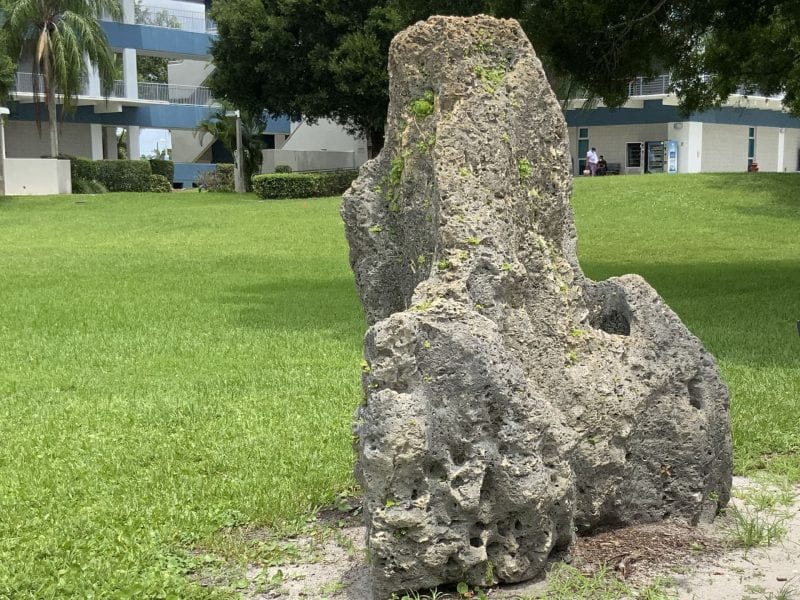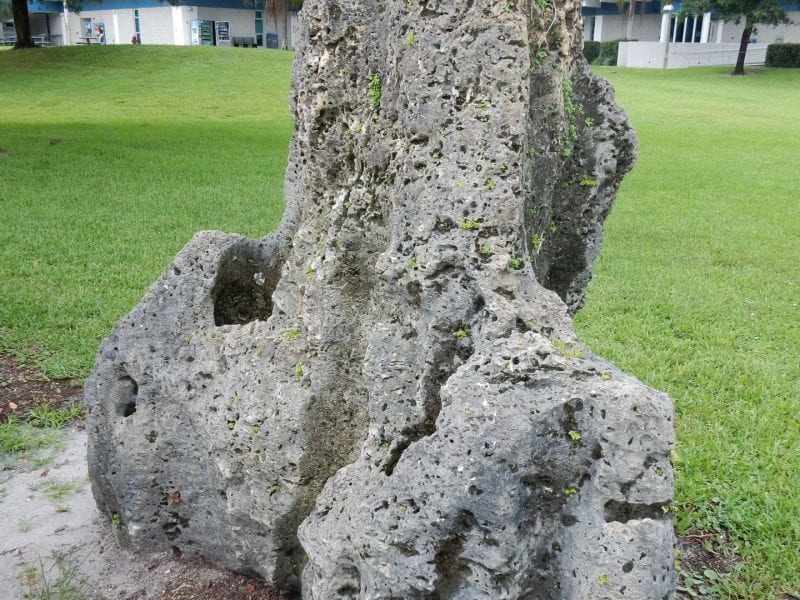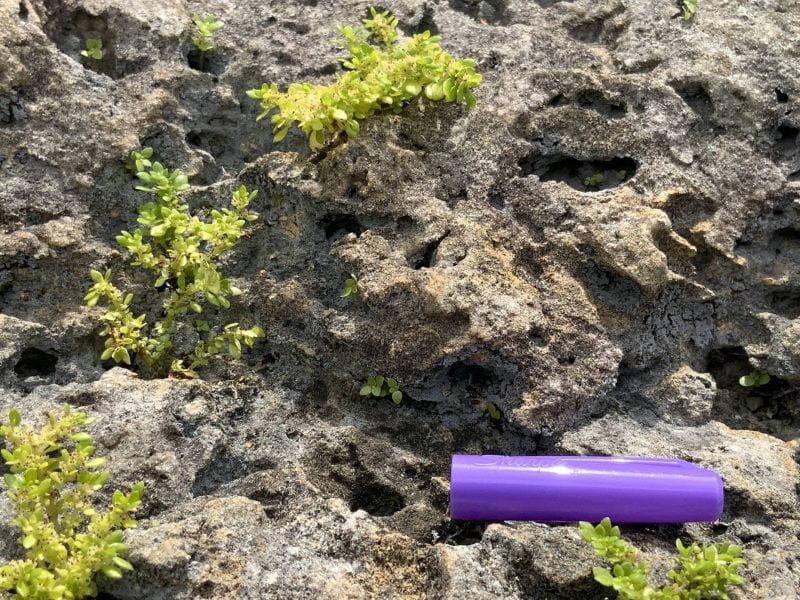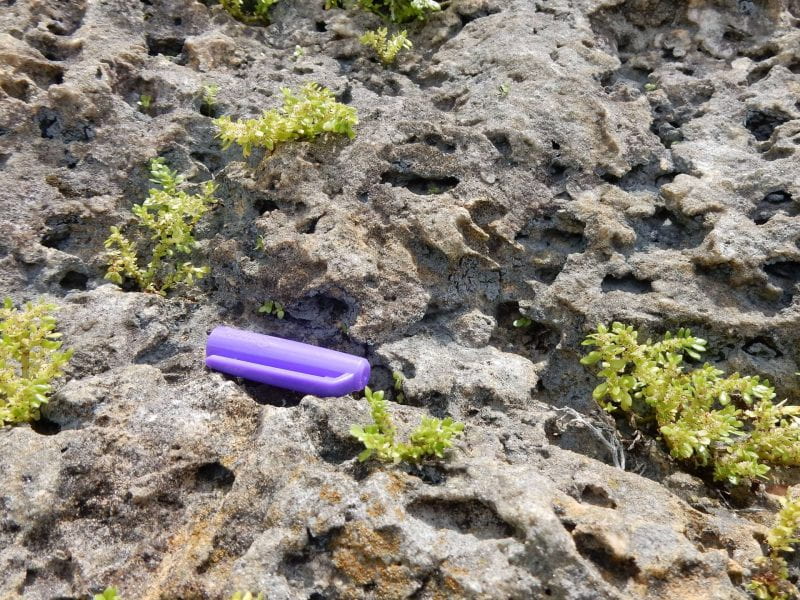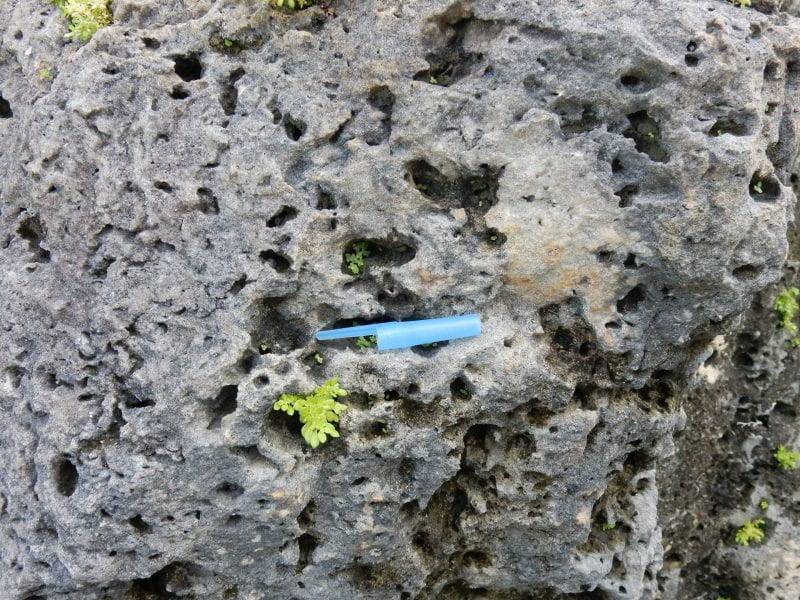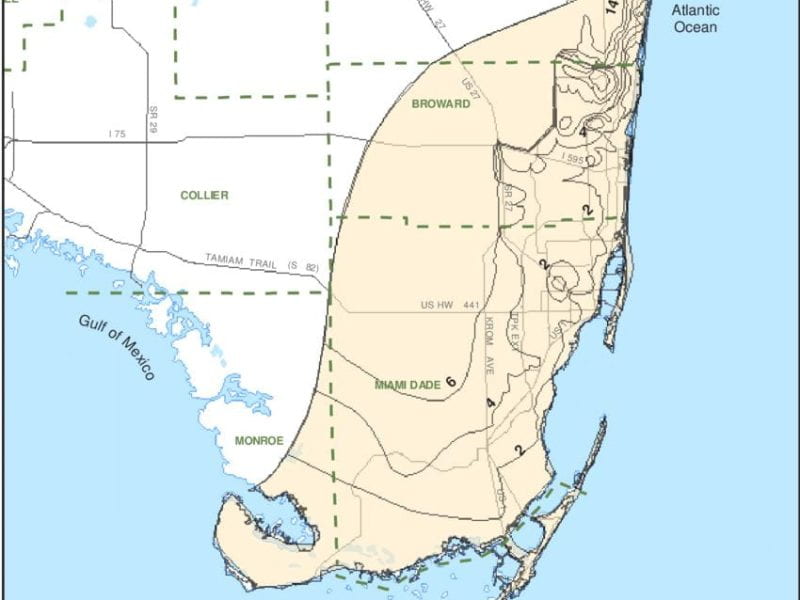Special Rock Formations
Limestone Formation Within Biscayne Aquifer
This is a fragment of the underground layer of porous limestone that is a part of the Biscayne Aquifer. The voids present in the rock are a perfect example of touching-vug porosity, a subtle karst feature characteristic of this limestone and facilitates much of the ground water flow in this unconfined aquifer located in South Florida (Cunningham, 2009). This feature makes the Biscayne Aquifer one of the most permeable aquifers in the world (Parker et al., 1955) and provides much of the water for Broward and Miami Dade counties.
Limestone is a sedimentary rock that forms in areas that are covered by ocean water. You can often see calcareous shells of marine organisms in this type of rock. If these rocks experience weathering at or near the earth’s surface, dissolution can occur. This process results in the formation of karst features, such as the holes seen here, as acidic water selectively dissolves some of the calcium carbonate that forms this type of rock. A process that continues even today!
Aquifer Sample courtesy of Professor William Opperman

